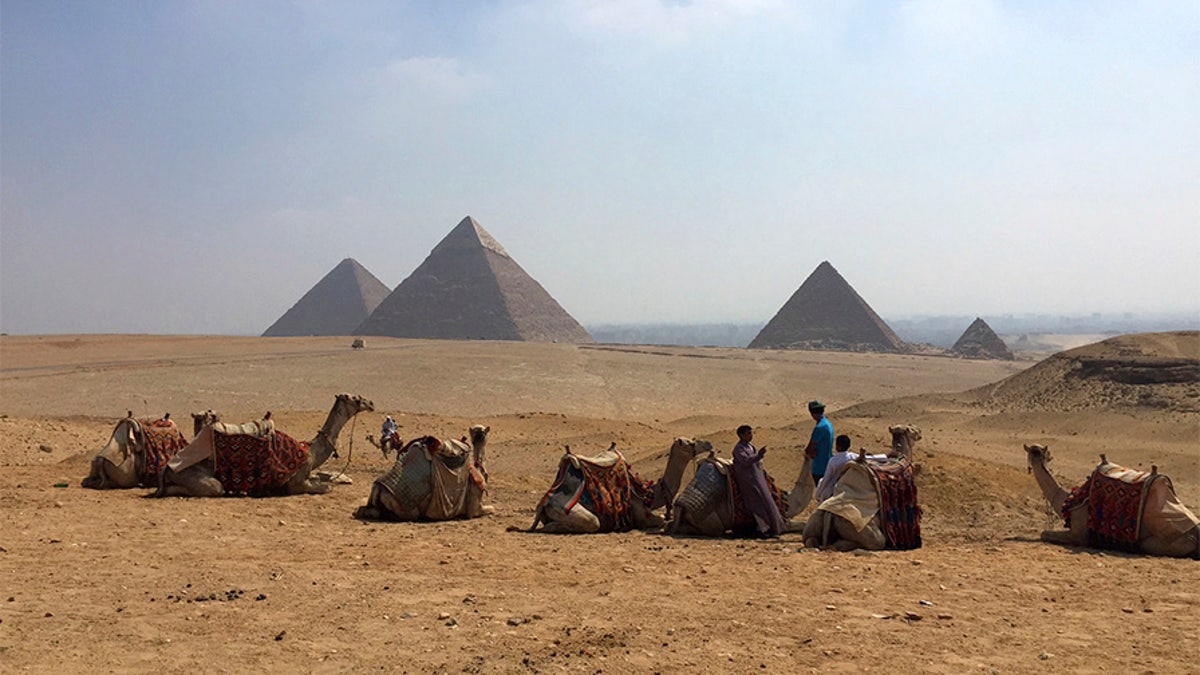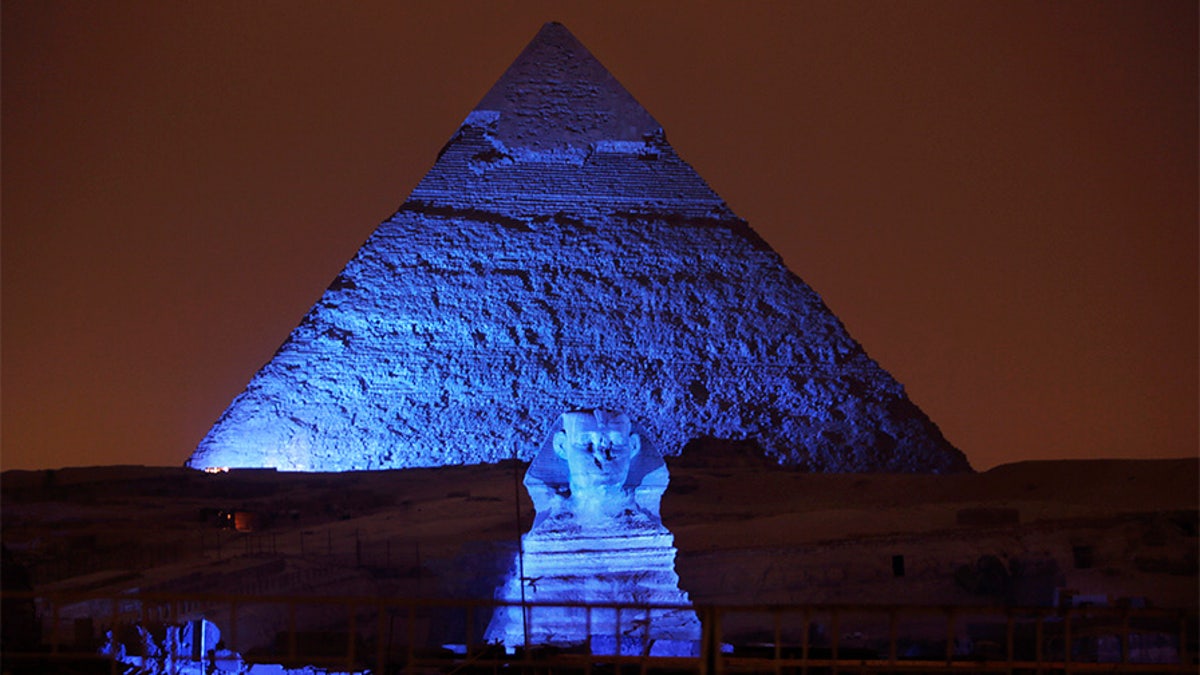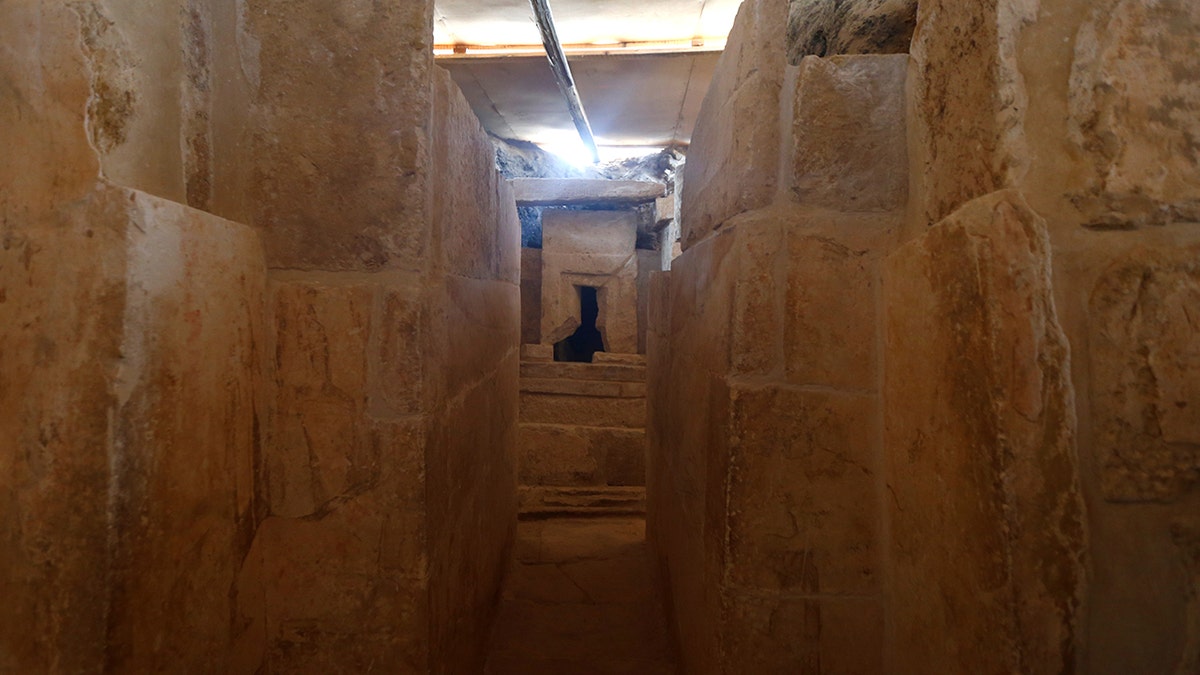
Camels rest between rides with their owners against the backdrop of the pyramids in Giza, Egypt, in 2015. (AP Photo/Courtney Bonnell)
Egyptian archaeologists are hailing the discovery of a 4,400-year-old tomb near the pyramids outside Cairo.
Antiquities Minister Khaled al-Enany told reporters Saturday that the tomb was built for Hetpet, a priestess to Hathor, the goddess of fertility, who assisted women in childbirth, Ireland’s RTE reported.

A guide from the Ministry of Antiquities inspects a discovery from Egypt’s antiquities authorities at the Giza plateau, the site of the three ancient pyramids on the outskirts of Cairo, Egypt. (REUTERS)
The tomb was discovered during excavation work in Giza's western cemetery by a team of Egyptian archaeologists led by Mostafa Al-Waziri, secretary general of the Supreme Council of Antiquities.
The cemetery houses tombs of top officials from the Old Kingdom's Fifth Dynasty (2465-2323 BC), and that several have already been dug up since 1842, according to RTE.
"The tomb has very distinguished wall paintings in a very good conservation condition depicting Hetpet standing in different hunting and fishing scenes or... receiving offerings from her children," the Antiquities Ministry said.

The Sphinx and the historical site of the Giza Pyramids are illuminated with blue light, as part of the celebration of the 70th anniversary of the United Nations in Giza, just outside Cairo, Egypt, in 2015. (AP Photo/Amr Nabil)
Al-Waziri said the scenes depict a monkey — at the time commonly kept as domestic pets — reaping fruit and another dancing before an orchestra.
Al-Enany said the new tomb includes "a purification basin on which are engraved the name of the tomb's owner and her titles".

The discovery of an Old Kingdom tomb from Egypt’s antiquities authorities is seen at the Giza plateau, the site of the three ancient pyramids on the outskirts of Cairo, Egyp (REUTERS)
"A German expedition had found in 1909 a collection of antiquities carrying this lady's name, or a lady who has the same name, and these antiquities were moved to the Berlin museum at the time," he said, according to RTE.
"And 109 years later, we find this tomb that carries Hetpet's name."
The Associated Press contributed to this report.




















